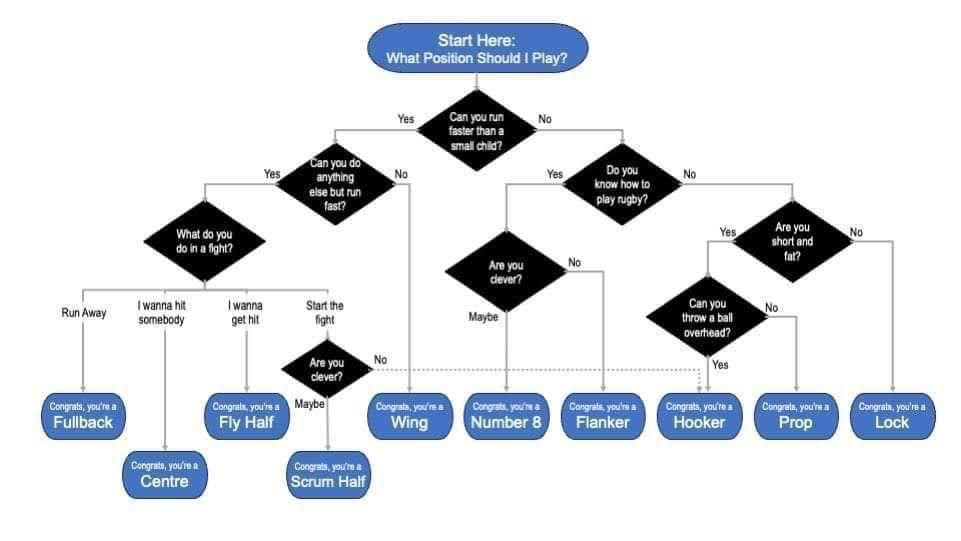How to Play
The game
Rugby is a game in which the object is to carry the ball over the opponents’ goal-line and force it to the ground to score.
It’s simple ... but complex
Visit the World Rugby website (www.world.rugby) to start with a brief Beginners Guide to Rugby. Additional, increasingly detailed information is available through the World Rugby website.
See below for some common questions.
How big is the field?
The maximum dimensions of a rugby pitch are 100m (goal line to goal line) x 70m (side line to side line). The in-goal area can be 10m - 22m deep. U12 and older teams usually play on play on US High School multi-sport rectangular fields. Using the soccer or lacrosse lines, the fields are 100 x 60, with 10 yards in each goal area. Younger tag teams play on reduced sized fields.
Do we need goal posts?
Yes, we use football goal posts, or soccer goals with poles affixed to create uprights. Rugby goal posts are normally on the goal line, but we use what's available. There is no regulation distance for the kicker from the uprights.
How long is a rugby game?
Game length varies based on the age group and version of the game being played. A Rugby 7s match, played during the summer, is only 14 minutes long, 2 x 7-minute halves. A high-school 15s match is 70 minutes, two 35-minute periods. U12 and U14, 15s match is 60 minutes, two 30-minute periods. U10 and younger play 40 minutes, 2 x 20-minute periods. During high-heat games, dedicated water breaks are added.
How many players are on the field at a time?
In touch rugby, there are 7 players on the field from each team. In tackle rugby, a regulation side has 15 players on the field from each team. There is an official 10-a-side variation of the game.
What about substitutions?
At the youth level, during the regular season, there is no limit on substitutions. Tournaments matches may impose limits on the number of substitutions each team is allowed.
Does the game start with a kickoff?
Yes, each period (half) starts with a kickoff. Before the match, team captains toss a coin to decide kickoff and which end of the field to defend. Team switch at halftime.
How do players advance the ball down the field?
Players advance the ball down the field by running, passing to a teammate, or kicking the ball. Passes must lateral or backwards. Any pass in a forward direction - that is the ball comes forward from the hands of the passer - results in a turnover. While the ball carrier is trying to run the ball downfield, teammates should be running in support, trying to be in a position to catch a pass and run past defenders.
What is a "ruck"?
In a tackle game, when a player has been tackled and placed the ball on the ground on his team's side of his body, defenders may attempt to step over him and pick up the ball. The ball carrier's teammates may push these defenders back (think blocking, as in football), but must do so in prescribed ways for safety. These safety requirements mainly have to do with making contact with the body and not the head. The players from each team vying for possession of the ball at a tackle form what is called a "ruck". When a ruck is formed, certain offside rules come into play. These offside rules are designed for safety and to create a fair contest for the ball.



